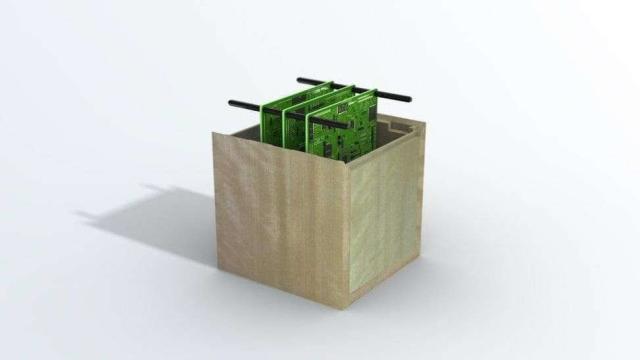When humans started flinging things into space, we didn’t really think about the impact it would have down the road, which means that, right now, there’s a whole lot of metal junk floating around in the ether. So, one Japanese company and Kyoto University have come up with a solution: wooden satellites.
The big problem here comes down to the fact that all this space trash has the potential to reenter Earth’s atmosphere. At that point, they’ll burn up, which releases tiny, harmful particles that will linger in the upper atmosphere for years to come, the BBC reports. And, honestly, the last thing us Earth-dwellers need is more shit entering the atmosphere that will impact our environment.
From the article:
Sumitomo Forestry said it has started research on tree growth and the use of wood materials in space.
The partnership will begin experimenting with different types of wood in extreme environments on Earth.
[…]
Sumitomo Forestry, part of the Sumitomo Group, which was founded more than 400 years ago, said it would work on developing wooden materials highly resistant to temperature changes and sunlight.
The wood it is using is an “R&D secret” a spokesman for the company told the BBC.
And from Nikkei Asia, here are some of the benefits of wood:
Wood does not block electromagnetic waves or the Earth’s magnetic field. This enables devices such as antennas and attitude control mechanisms to be placed inside a wooden satellite, allowing for simpler structures. In addition, when a wooden satellite de-orbits and plunges back to Earth, it would burn up completely without releasing harmful substances into the atmosphere or raining debris on the ground.
The first demonstration is scheduled to take place in 2023… but that’s about all we know about the project right now.
Sending organic compounds into space is challenging, to say the least. There’s a reason why it hasn’t been done before. It’s totally possible to build a spaceship out of wood, Popular Science admitted in 2014, but once it actually gets out into the great beyond, you’ll start having problems:
For starters, the organic matter would contain a fair amount of water. In a vacuum, that water would leak out and evaporate, which could affect the structure — especially in places where screws and brackets were attached. Even if this process unfolded over many weeks or months, the integrity of the spacecraft might be compromised.
Satellites would be slightly easier to use than a craft designed for travel, but there’s still a problem with conductivity. A lighter wood won’t regulate heat as well as metal does, so a sun-facing part of the satellite could be seriously damaged with all that extra heat. But specially-grown woods could lessen the problem.
How it turns out remains to be seen, but it will, at the very least, be a fairly incredible experiment with technology.
